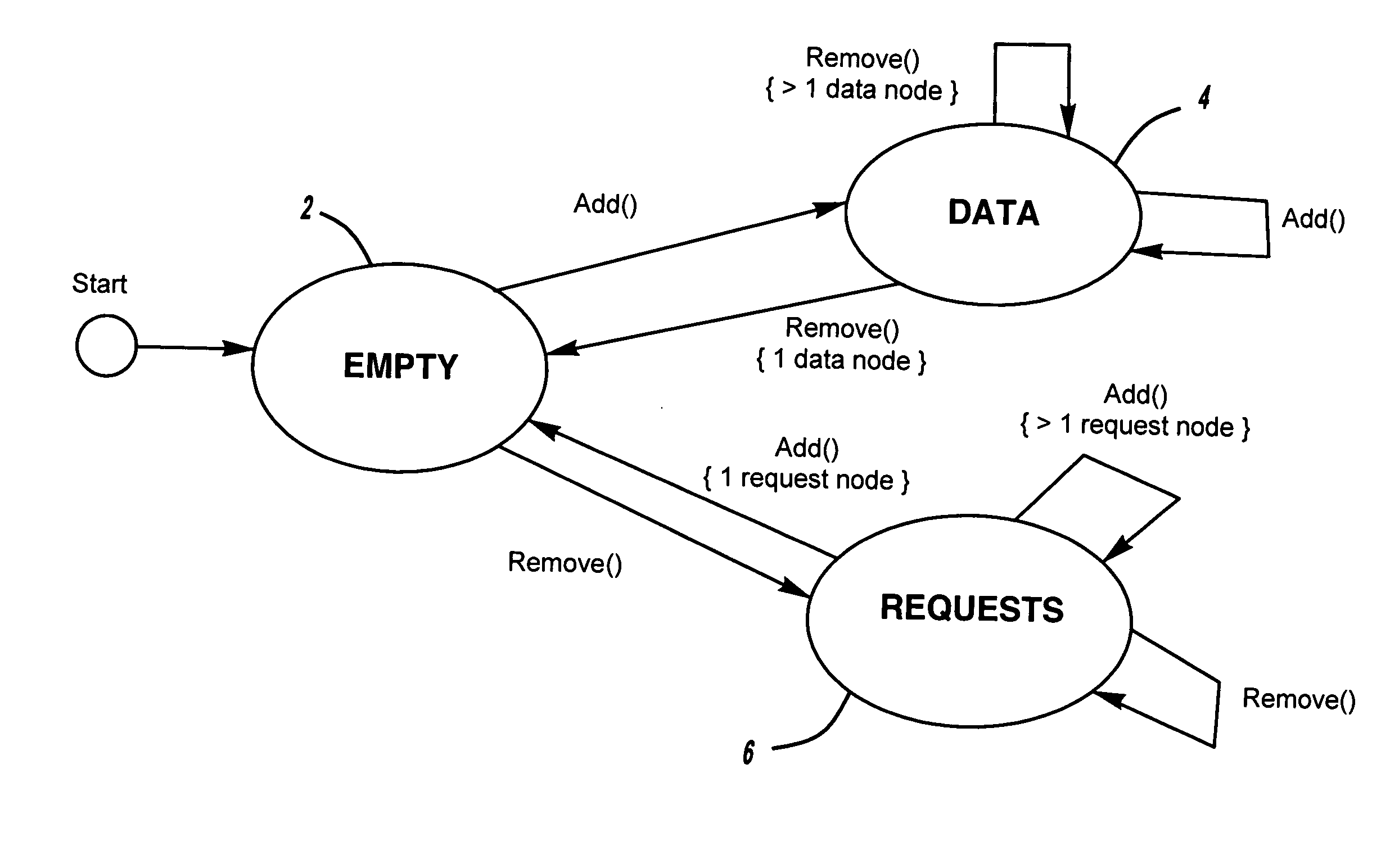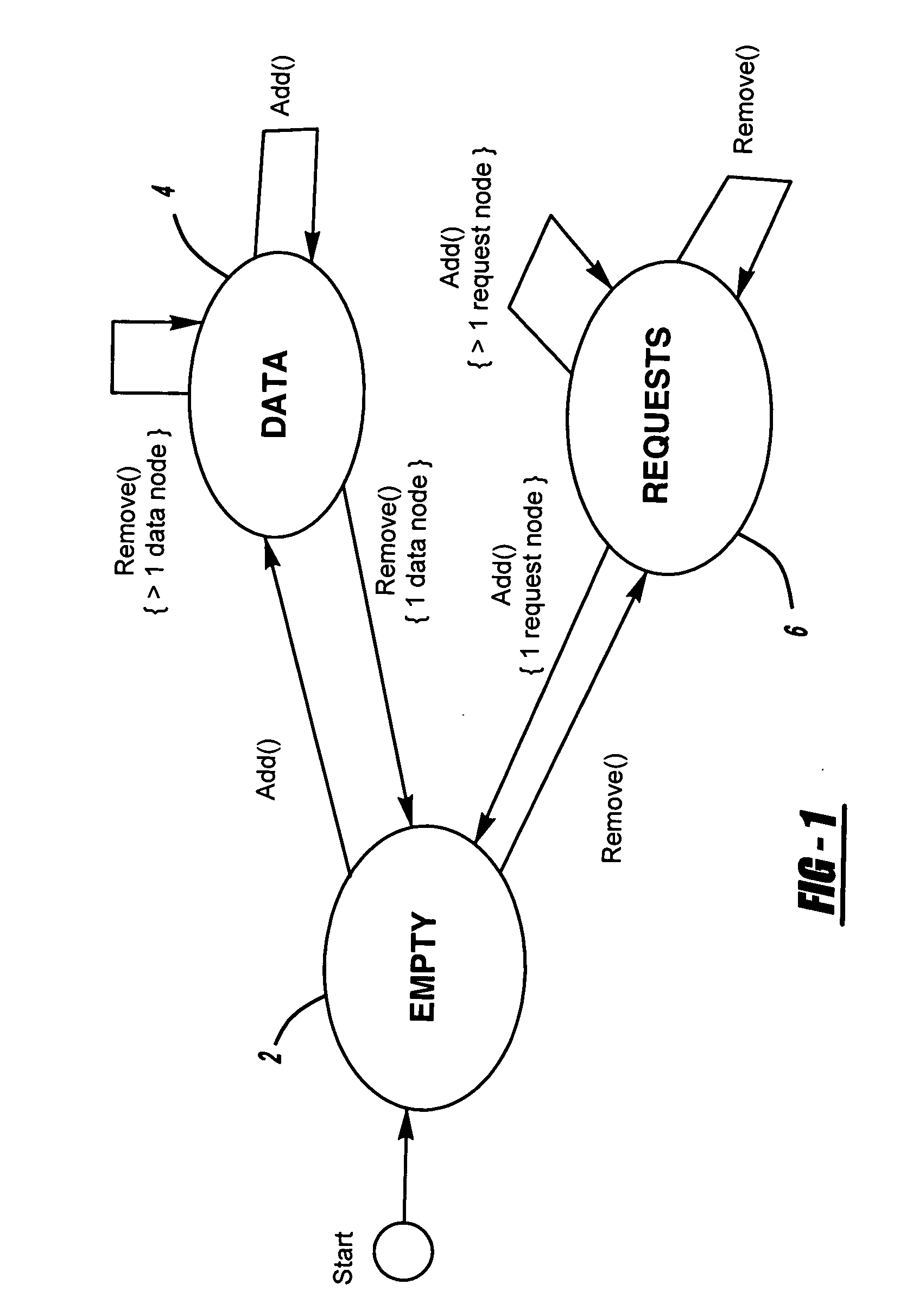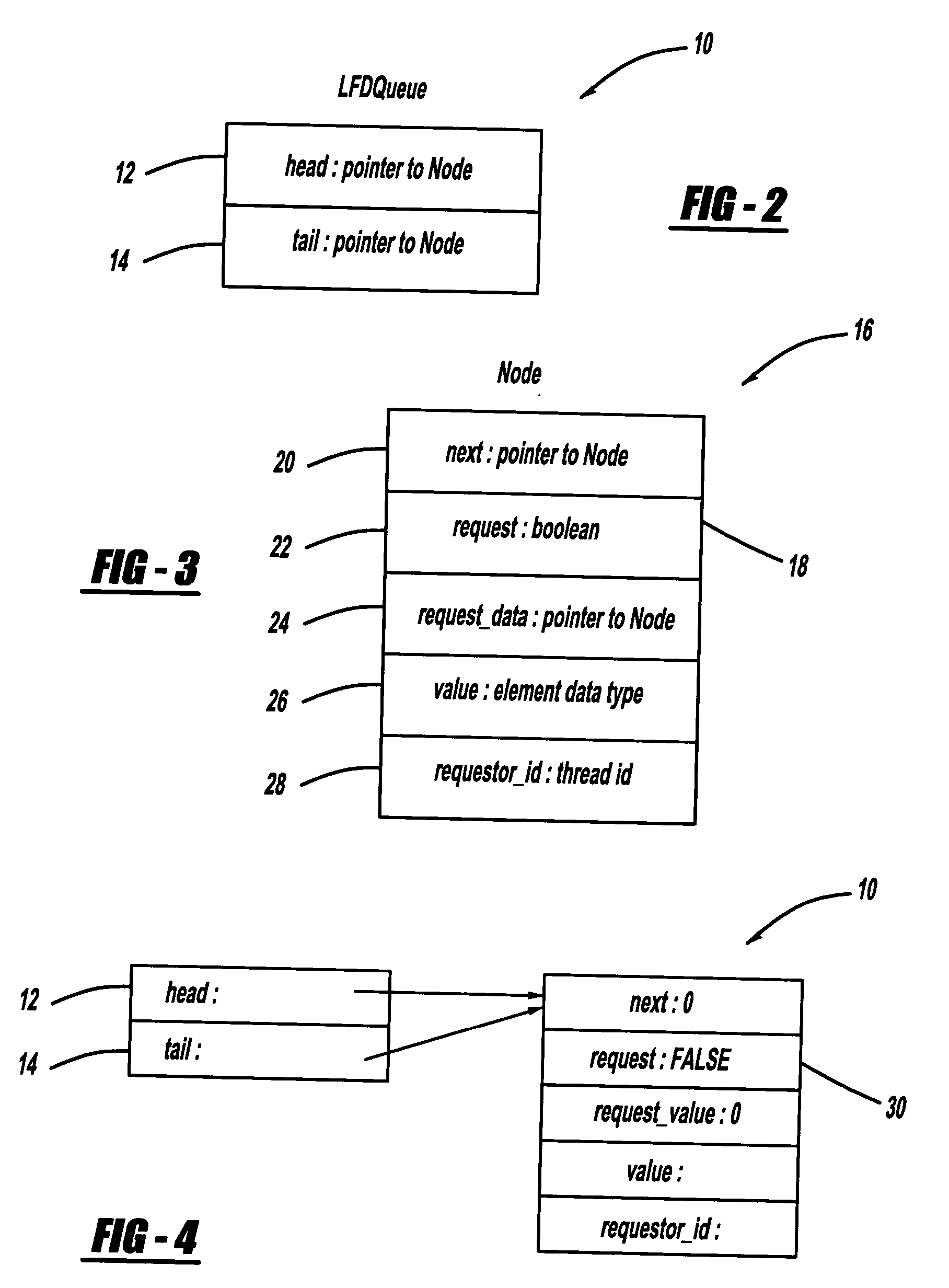System and method for generating a lock-free dual queue
a dual-queue, lock-free technology, applied in the direction of multi-programming arrangements, program control, instruments, etc., can solve the problems of threads not owning any resources, errors in modifying the queue state, and threads inadvertently overwriting data, so as to eliminate contention costs or exclusive access
- Summary
- Abstract
- Description
- Claims
- Application Information
AI Technical Summary
Benefits of technology
Problems solved by technology
Method used
Image
Examples
Embodiment Construction
[0054] Abstract Behavior of the Queue
[0055] As will be discussed in further detail below, the data structure or “queue” of the present invention is specifically applicable to software running on shared memory multiprocessor systems, especially in core applications such as operating systems, routers, etc. The queue has two distinct operations defined on it, namely “add” and “remove”. The effect of the operations depends on the “state” of the queue, which can be one of three basic conditions: EMPTY, DATA, or REQUESTS.
[0056] With reference to FIG. 1, “state” is used herein in the sense of a finite state machine. The queue of the present invention starts out EMPTY 2. It transitions from EMPTY 2 to DATA 4 if an add operation is performed, or it transitions to REQUESTS 6 if a remove operation is performed. Similar transitions are defined depending on the current queue state, the number of nodes, and the operation being performed.
[0057] The EMPTY state 2 is what its name implies—there a...
PUM
 Login to View More
Login to View More Abstract
Description
Claims
Application Information
 Login to View More
Login to View More - R&D
- Intellectual Property
- Life Sciences
- Materials
- Tech Scout
- Unparalleled Data Quality
- Higher Quality Content
- 60% Fewer Hallucinations
Browse by: Latest US Patents, China's latest patents, Technical Efficacy Thesaurus, Application Domain, Technology Topic, Popular Technical Reports.
© 2025 PatSnap. All rights reserved.Legal|Privacy policy|Modern Slavery Act Transparency Statement|Sitemap|About US| Contact US: help@patsnap.com



